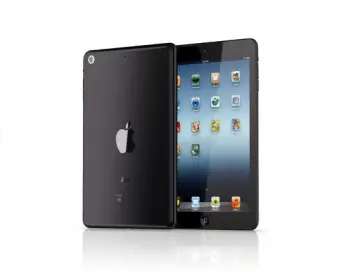
The 7-inch factor: Has Google beaten Apple at their own game?
Here’s a quote: “3.5 inch handset size is the ‘sweet spot’ for mobile phone design; big enough to produce detailed, legible graphics, but small enough to fit comfortably in the hand and pocket.” That was Steve Jobs speaking on his belief that consumers were not and should not be interested in a smartphone with a large display.
Here’s another quote: “7-inch tablets are tweeners: too big to compete with a smartphone and too small to compete with the iPad… the current crop of 7-inch tablets are going to be DOA — dead on arrival.” That was Steve Jobs, again.
Here are the two latest mobile devices unveiled by Apple: the 4-inch iPhone 5 and the 7.9-inch iPad Mini. You can spin that extra nine-tenths of an inch any way you want, but it’s still a tablet in the 7-inch class for all intents and purposes. So why the sudden change of heart, Apple? It would be easy to say that the shift is a clear sign of Apple moving away from Jobs’ ideals in the Tim Cook era, but that doesn’t tell the whole story. In fact, reports state that Jobs was heavily involved in hashing out the design of the iPhone 5 and it’s larger display size before his death.
Sure, the device remains in the arbitrarily determined size range of 3.5 to 4 inches, a size supposedly catered perfectly to operating a device with one hand (though a study from earlier in the year found that 4.5 inches was ideal), but the decision to bump up the iPhone’s size comes as an admission. The market is trending in a direction Apple had not anticipated, and now the company is playing catchup.
Those 7-inch tablets that Jobs labeled as dead on arrival? They have been quickly carving out a space for themselves, stealing market share from Apple’s iPad thanks to the low cost of slates like the Nexus 7 and the media ecosystem of Amazon’s Kindle Fire. Pay no attention to Tim Cook’s ridiculous claims that the iPad Mini “is not a compromised product like [other] 7-inch tablets.”
Cook can backpedal however he likes, but do not believe for a second that Apple wanted to make the iPad Mini. They did not want to make a smaller tablet at a lower price, one that would continue to create an Android-esque fragmentation between devices based on screen size and pull sales away from the more expensive 10-inch iPad.
The iPad Mini is a direct response to 7-inch competitors, but despite claims that it is somehow a more complete experience, it still fails to challenge the Nexus 7 and Kindle Fire in one key area: price. Google and Amazon’s tablets retails for $199. The iPad Mini is priced at $329. Apple will likely sell plenty of iPad Minis based on the brand alone, but will it be enough?
The release of the iPad Mini feels almost like a defensive move on the part of Apple and along with the iPhone 5 signals a huge shift. Gone are the days when Apple’s products push the boundaries of innovation and set the standard for the market. Due to the companies stubborn refusal to stray from the one-size-fits-all approach of Steve Jobs, Apple is the caboose on the 7-inch money train while Google and Amazon are the engineers.